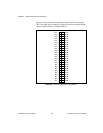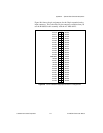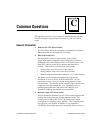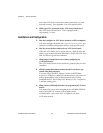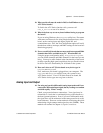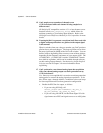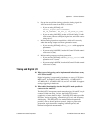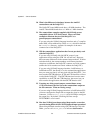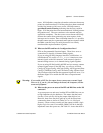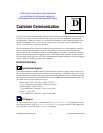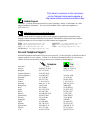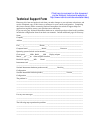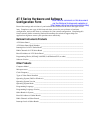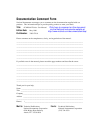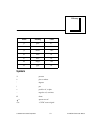
Appendix C Common Questions
National Instruments Corporation C-7 AT-MIO/AI E Series User Manual
errors. NI-DAQ takes a snapshot of transfers and counts how many
points have been transferred. If all the points have been transferred
and the first instance of this error occurs, NI-DAQ returns a
gpctrDataTransferWarning indicating that the error could be
bogus. If all the points have not been transferred, NI-DAQ returns
the genuine error. The error continues to be returned until the
acquisition completes. The above error occurs because NI-DAQ
disarms the counter from generating any more requests in the
interrupt service routine. Due to interrupt latencies, it is possible
that the counter may have generated some spurious requests which
the DMA controller may not satisfy because it has already
transferred the required number of points.
25. What are the PFIs and how do I configure these lines?
PFIs are Programmable Function Inputs. These lines serve as
connections to virtually all internal timing signals.
If you are using NI-DAQ language interface, LabWindows, or
LabWindows/CVI, use the Select_Signal function to route
internal signals to the I/O connector, route external signals to
internal timing sources, or tie internal timing signals together.
If you are using NI-DAQ with LabVIEW and you want to connect
external signal sources to the PFI lines, you can use AI Clock
Config, AI Trigger Config, AO Clock Config, AO Trigger and Gate
Config, CTR Mode Config, and CTR Pulse Config advanced level
VIs to indicate which function the connected signal will serve. Use
the Route Signal VI to enable the PFI lines to output internal
signals.
Warning: If you enable a PFI line for output, do not connect any external signal
source to it; if you do, you can damage the board, the computer, and the
connected equipment.
26. What are the power-on states of the PFI and DIO lines on the I/O
connector?
At system power-on and reset, both the PFI and DIO lines are set
to high impedance by the hardware. This means that the board
circuitry is not actively driving the output either high or low.
However, these lines may have pull-up or pull-down resistors
connected to them as shown in Tables 4-1 to 4-4, I/O Signal
Summary. These resistors weakly pull the output to either a logic
high or logic low state. For example, DIO(0) will be in the high
impedance state after power on, and Table 4-1 shows that there is



